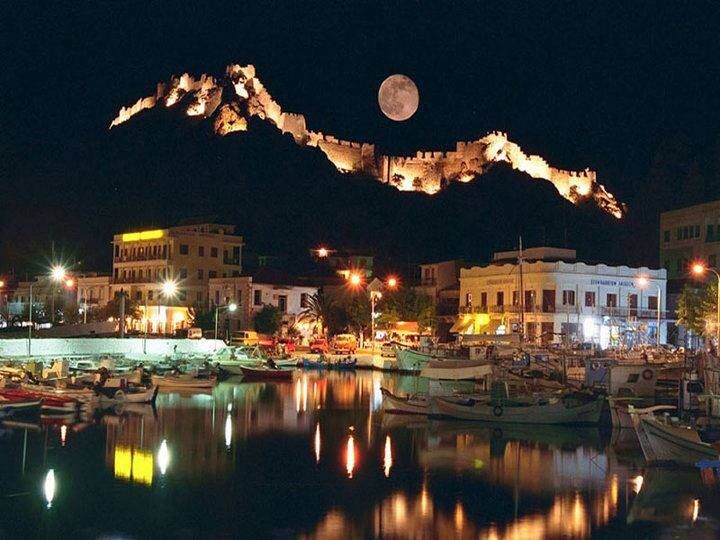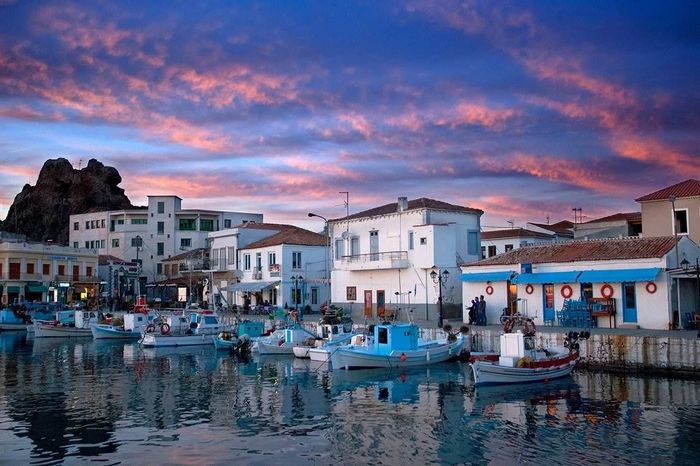In antiquity, the island was covered with a thick pall of smoke licked by fiery tongues of flame. These were the fires of its two volcanic mountains. According to tradition, Zeus has herald Hephaestus into one of them, Mosychios, to live there outcast from Olympus, the home of other gods.
Myrina, the capital of the island which is also called Kastro, is built on the site of the ancient city of this name.

On the hill above the picturesque town, with its narrow paved streets and stone mansions, stands the Byzantine castle. It was built by Andronikos I Komninos on the ruins of Pelasgian walls.
Sights worth visiting in the town include the Archaeological museum with finds from Myrna, Iphaisteia, the Kobeiron, the prehistoric settlements of Poliochni and Imyros.
The settlement of Platy, 2km outside the town, has several traditional houses and some old fountains. At Therma, 4km away from Myrina, there are mineral springs.
North of the town lies Agios Ioannis and Kaspakas, a traditional village built on the slopes of a hill out of sight of the sea, for fear of pirates. To the east of Kaspakas is Kornos, one of the most beautiful inland villages of Limnos. where excellent local sweets are made.
Further east is Agios Dimitrios, which produces excellent muscatel wine.

The village of Atsiki, next to the airport, 22km north-east of Myrina, lies amidst the vines and fruit trees and enjoys a superb view over the bay of Pournias. It also has many local customs and festivals.
To the east is Repanidi, a traditional inland village which has some interesting churches with carved iconostasis and Byzantine icons and the remains of a Byzantine castle at Kotsinas, deep in the bay of Pournias. In this same area, to the north east of the capital is the village of Kondopoulos, which has a distinctive local atmosphere, built next to two small lakes.North of this village, on the right side of the bay of Pournias, are the remains of ancient Hephasteia, the most important city on Limnos in the Classical period.
Part of the Greco- Roman theatre survived, as well as house foundations, the ruins of the acropolis and a cemetary. Moudros and the second most important harbour on Limnos is a beautiful little town with fine houses. A short distance to the north-east is Poliochni, the earliest Neolithic site in the Aegean. Four settlements have been discovered here, built one above the other.
Other beautiful villages are Panayia and Plaka at the north east end of the island, with fine honey and cheese. Skandali is another beautiful village with the monastery of Agios Sozon nearby.